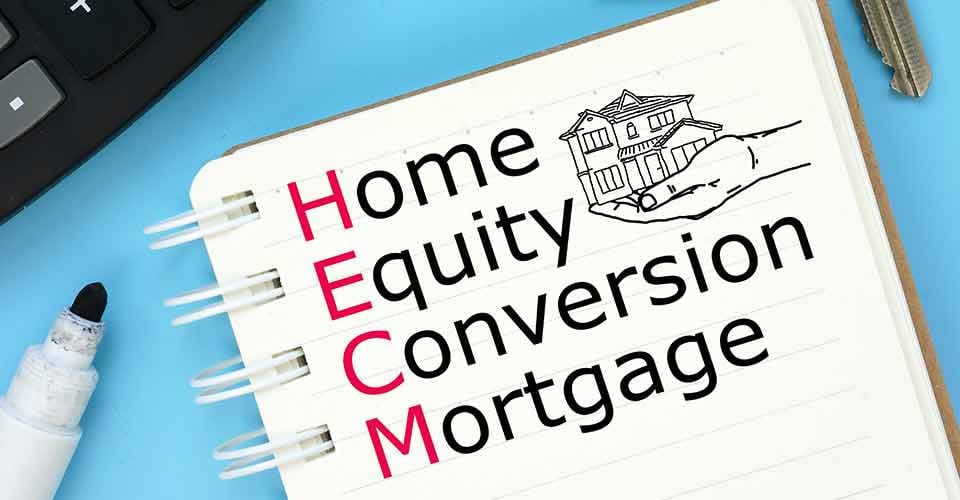How to Prevent Mistakes with Equity Release Mortgages
How to Prevent Mistakes with Equity Release Mortgages
Blog Article
Checking Out the Various Sorts Of Equity Release Mortgages Available Today
Equity Release home loans present numerous options for property owners aged 55 and over. equity release mortgages. These monetary items accommodate various requirements and choices, allowing individuals to gain access to funds from their home. From lifetime mortgages to common appreciation home loans, each type offers unique advantages. Recognizing these options is vital for making informed choices. What factors should one take into consideration when choosing one of the most appropriate equity Release plan? The details that comply with might clarify this vital subject
Recognizing Equity Release Mortgages
Equity Release home mortgages give house owners, generally those aged 55 and over, with a means to access the value locked up in their building without requiring to sell it. This financial alternative permits people to transform a portion of their home equity right into money, which can be made use of for different functions, such as home renovations, repaying financial obligations, or financing retirement.Equity Release can take various forms, however it fundamentally entails loaning versus the worth of the home while preserving possession. House owners can pick to receive a swelling sum or a collection of smaller sized repayments, depending upon their monetary requirements and preferences.Additionally, the amount available for Release is affected by the property's value, the property owner's age, and details lending institution standards. Overall, comprehending equity Release mortgages is necessary for homeowners to make enlightened choices regarding touching right into their home's equity while considering the long-lasting ramifications.
Life time Mortgages
Life time home mortgages represent among one of the most preferred types of equity Release. This economic item allows homeowners, generally aged 55 or older, to obtain versus the value of their building while retaining ownership. The finance, which is secured versus the home, builds up interest in time but does not require regular monthly payments. Instead, the finance and built up interest are repaid when the property owner passes away or moves right into long-term care.Lifetime mortgages provide versatility, as debtors can select to obtain a lump sum or select a drawdown center, accessing funds as needed. Notably, numerous plans included a no-negative-equity warranty, making sure that consumers will certainly never ever owe more than the worth of their home. This feature gives peace of mind, allowing people to appreciate their retirement without the concern of diminishing their estate. On the whole, lifetime home mortgages serve as a practical option for those seeking financial backing in later life.
Home Reversion Program

Drawdown Life Time Mortgages
While many homeowners seek methods to access their wide range, drawdown life time mortgages provide a flexible choice that permits individuals to Release funds gradually. This kind of equity Release home mortgage enables home owners to obtain against the value of their residential or commercial property while retaining ownership. Unlike traditional lifetime home mortgages, drawdown plans permit customers to access a portion of their equity upfront and take out extra funds as needed, up to a fixed limit.This attribute can be especially advantageous for those that wish to manage their funds thoroughly, as it decreases rate of interest accumulation by only billing rate of interest on the quantities attracted. In addition, drawdown life time home mortgages usually feature a "no unfavorable equity assurance," making certain that borrowers will certainly never ever owe more than their home's value. This choice fits retirees that desire economic protection and versatility, enabling them to satisfy unanticipated expenditures or keep their way of life without needing to market their residential property.
Improved Life Time Mortgages
Improved Life time Home mortgages supply unique benefits for eligible property owners looking for to Release equity from their homes. Recognizing the eligibility standards is essential, as it determines that can take advantage of these specialized finances. However, it is also vital to review the potential drawbacks linked with improved options, making certain a well-shaped perspective on their use.
Eligibility Standards Described
Recognizing the eligibility requirements for Enhanced Lifetime Mortgages is essential for possible candidates seeking to access the equity in their homes. Generally, applicants need to be aged 55 or older, as this age demand is standard in the equity Release market. Home owners must have a property valued at a minimum limit, which can vary by loan provider. Notably, the residential or commercial property needs to be their primary residence and in excellent condition. Lenders commonly assess the homeowner's wellness standing, as certain health problems may enhance eligibility and advantages. Furthermore, candidates ought to not have existing significant financial debts safeguarded against the residential or commercial property. Meeting these standards allows people to discover Boosted Lifetime Mortgages as a practical alternative for accessing funds bound in their homes.
Benefits of Boosted Home Mortgages
After clarifying the qualification standards, it comes to be noticeable that Improved Lifetime Mortgages use several significant advantages for home owners aiming to leverage their building equity. Mainly, they provide accessibility to a larger loan amount compared to basic lifetime home mortgages, profiting those with wellness problems or age-related aspects that raise their life expectations risk. This enhanced loaning capability enables home owners to fulfill numerous economic demands, such as home improvements or retirement costs. Furthermore, these home loans typically feature versatile repayment options, making it possible for customers to manage their finances better. The no-negative-equity warranty further assures that homeowners will certainly never ever owe greater than their property's value, supplying assurance. In General, Improved Lifetime Home loans provide an engaging option for qualified house owners seeking financial solutions.
Possible Downsides Considered
While Enhanced Lifetime Home mortgages use various benefits, potential disadvantages necessitate cautious consideration. One substantial worry is the influence on inheritance; the equity released minimizes the worth of the estate left to recipients. In addition, these home loans can build up considerable passion gradually, leading to a significant financial obligation that may go beyond the original car loan quantity. There might likewise be limitations on residential or commercial property alterations or rental, restricting property owners' adaptability. Boosted items frequently need details health and wellness problems, indicating not all home owners will qualify. Taking care of the fees and costs connected with these home mortgages can be intricate, possibly leading to unanticipated prices. As a result, people ought to completely examine their scenario and get in touch with financial consultants before continuing.
Shared Admiration Mortgages
Shared Recognition Home mortgages represent a distinct monetary plan that enables home owners to access equity while sharing future building value increases with the lending institution. This approach offers prospective advantages such as decreased month-to-month payments, but it likewise includes drawbacks that should be carefully taken into consideration. Comprehending the qualification requirements is important for those thinking about this option.
Principle Introduction
Equity Release home mortgages, especially in the kind of common gratitude home loans, offer property owners a special economic solution that allows them to accessibility funds by leveraging the value of their residential property. In this setup, a lending institution gives a financing to the property owner, which is usually settled through a share of the residential or commercial property's future gratitude in value. This indicates that when the property owner markets the home or passes away, the lender gets a portion of the raised worth, rather than simply the initial car loan amount. Shared admiration home mortgages can be appealing for those looking to supplement their earnings or financing significant expenses while retaining ownership of their home. The financial implications of common gratitude have to be very carefully taken into consideration by possible debtors.
Drawbacks and advantages
Although shared appreciation mortgages can offer considerable financial benefits, they additionally come with noteworthy drawbacks that prospective consumers should take into consideration. These home loans enable house owners to gain access to equity in their homes while sharing a section of any type of future appreciation with the loan provider. This setup can be helpful throughout times of climbing residential or commercial property worths, providing substantial funds without monthly repayments. The major downside is the prospective loss of equity; homeowners might finish up with appreciably lowered inheritance for heirs. Furthermore, the intricacy of the terms can cause misconceptions concerning repayment responsibilities and the portion of gratitude owed. It is crucial for customers to consider these variables thoroughly prior to dedicating to a common gratitude mortgage.

Qualification Needs
What criteria must home owners satisfy to get approved for a shared appreciation mortgage? Mainly, candidates should be at least 55 years old, assuring they are within the target market for equity Release products. In addition, the building must be their primary home and usually valued over a defined minimum threshold, typically around ? 100,000. Lenders also evaluate the home owner's financial conditions, consisting of earnings and arrearages, to ascertain they can take care of the home mortgage properly. Significantly, the building has to remain in great problem and without significant legal encumbrances. Homeowners need to likewise have a clear understanding of the terms, including how admiration will be shared with the lending institution upon sale or transfer of the residential property, you can check here as this influences overall returns.
Choosing the Right Equity Release Choice

Frequently Asked Questions
What Age Do I Need to Be for Equity Release?
The age demand for equity Release usually begins at 55 for many strategies. Some companies may use alternatives for those aged 60 and above, mirroring varying terms based on specific scenarios and lending institution policies.
Will Equity Release Impact My Inheritance?
Equity Release can affect inheritance, as the amount borrowed plus interest lowers the estate's value. Heirs may receive much less than expected, depending upon the property's recognition and the overall financial debt at the time of passing.
Can I Move House With Equity Release?
The concern of moving residence with equity these details Release arises often. Normally, individuals can transfer their equity Release strategy to a brand-new building, yet particular conditions may apply, calling for examination with the lending institution for assistance.
Are There Costs Connected With Equity Release Mortgages?
Fees related to equity Release home mortgages can consist of setup costs, appraisal fees, and legal expenses. Additionally, there may be very early payment fees, which can affect the total expense and financial implications for the customer.
Exactly How Does Equity Release Effect My Tax Obligation Circumstance?
Equity Release can affect one's tax situation by possibly increasing taxed earnings, as launched funds are considered funding. It normally does not incur prompt tax obligation obligations, making it vital to get in touch with a monetary consultant for individualized support.
Conclusion
In summary, the variety of equity Release home mortgages available today supplies homeowners aged 55 and over numerous pathways to access their building's value - equity release mortgages. Whether deciding for a life time mortgage, home reversion plan, or other options, each alternative offers distinct advantages tailored to individual financial demands. Careful consideration and assessment with a financial advisor are vital to assure the picked equity Release option lines up with financial scenarios and personal goals, ultimately browse around this site helping with informed decision-making for a safe and secure economic future. Equity Release home mortgages present different options for home owners aged 55 and over. Equity Release home mortgages supply home owners, commonly those aged 55 and over, with a way to access the value linked up in their residential property without needing to offer it. Improved Life time Home loans use unique advantages for eligible home owners seeking to Release equity from their properties. Equity Release home loans, especially in the kind of shared admiration mortgages, use home owners a distinct economic remedy that allows them to access funds by leveraging the value of their residential or commercial property. In summary, the range of equity Release home mortgages offered today uses property owners aged 55 and over multiple paths to access their residential property's worth
Report this page